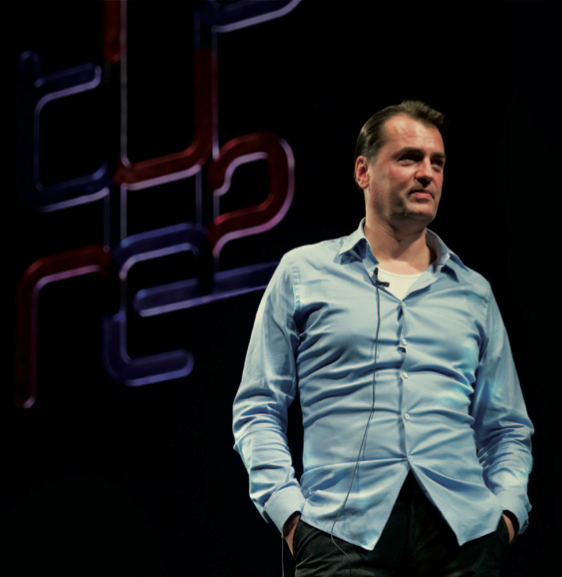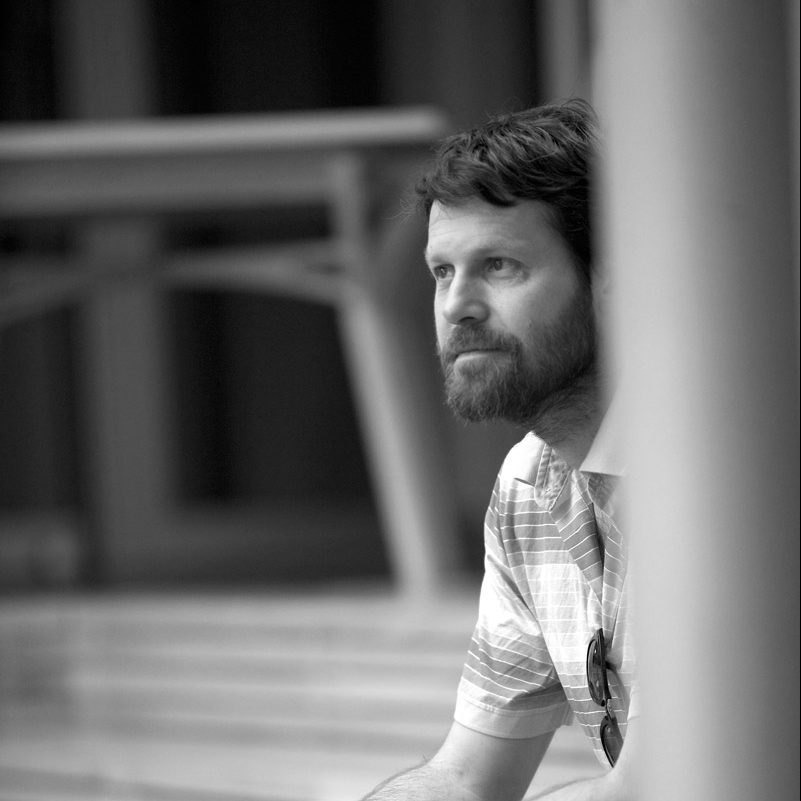
INTERVIEW WITH PATRIK SCHUMACHER – POLITIKA
Intuition As Second Nature
The famous Zaha Hadid, a world renowned name in the field of architecture, no longer participates in seminars and no longer delivers lectures.
Many would say: What a shame! However, Patrik Schumacher, her partner at Zaha Hadid Architects, does it, to the satisfaction of many. Last weekend
he was in Belgrade for the first time, thanks to the help of the British Council. He spoke at the recently ended Belgrade Design Week, where he received the sought after festival Grand Prix. He found time to visit the center of Belgrade, Kalemegdan park and, by his own admission, the “unforgettable” river banks. That is the reason he said he would gladly provide creative contribution to the development of the city, if invited to do so. This graduate philosopher and architect, who received his Ph.D. in Klagenfurt, teaches at architecture schools in the UK (where he lives and works), USA and Austria. And in those places where he teaches, he often designs almost surreal-looking buildings, based on the rules of Parametricism, the first important global architectural style after Modernism. That is what his visit, in terms of expertise, was dedicated to.
The summary of your lecture could be described with the following words, I quote: “Yes to fluid and amorphous forms. Yes to intelligent design. Yes to diverse, interconnected elements. And yes to organic beauty”.
In a nutshell – that’s it. The style that I am speaking of has been nurtured by new generations of architects for the past 15 years, and it fits modern society perfectly, the society in which communication is multi-dimensional and intense. Instead of rigid forms of the traditionally constructed buildings, we use more flexible forms, often looking for inspiration in nature and the environment. Forms are varied and flexible, design is innovative, components are mutually linked as much as possible and emerge from one another. It is easy to insert those buildings into the context of the environment which they complement.
You say that styles are always created in accordance with the present?
Modernism, as the first major post-war style, literally changed the urban environment. It was
based on industrialization, largely on the planned economy and socialism. After the 1975 it got into a crisis, Postmodernism and Deconstructivism have emerged, aimed at finding new ways to create a different environment for a different society. The computer revolution changed many things – a greater potential for diversification and rapid cycles of innovation begun to occur and the society has become more dispersed and multicultural. A perfect style in such a context is Parametricism, the term that I invented, arguing that this new movement needs to be recognized and named, if it was going to be presented to a wider audience.
Zaha Hadid and yourself have built numerous museums, exhibition halls and even private homes based on these new, innovative principles. Which project, in your opinion, stands out?
If I have to, I would single out MAXXI – the National Center for Contemporary Arts in Rome. The composition is very complex, it has numerous levels. Also, a good example would be the new urban masterplan that we have developed for an area of Istanbul on the Asian side.
You are engaged both in philosophy and architecture. You design, teach, write, investigate, both theory and practice of architecture…
All scientific disciplines meet philosophy. However, if a problem is thought through too thoroughly, and if that takes too much time, which is typical in the field of philosophy, a person looking for a practical solution can find it difficult to choose just one option, among many. Personally, when I find myself in the midst of a design mood, I always follow the principles I have already established in the contemplation phase, so there is no deadlock. When it comes to practical work, I work intuitively. It has become my second nature.
You have been working with Zaha Hadid since 1988. How did you two meet, who referred you to her?
No one. My résumé was my reference. I sent them a résumé and they invited me to join the club. The first time I saw her in class, I was a student in London and I already knew her work. She was one of the most creative architects I had ever seen.
You are now “partners in crime”…
Yes, it came to that. Working with her is always stimulating, even though we’ve known each other for a long time. The system has changed a lot in the meantime, there were five of us when we started and now there are about 400 of us. However, we cherish the freedom of thought, the atmosphere in the studio is great and we work with very young people – average age is around 32.
Which project are you most proud of?
In addition to the MAXXI museum, of course, there is the Opera house in Guangzhou, China. It was a very successful project, a large, complex structure, which now, as it is, provides a wonderful, magical foundation for spending a pleasant evening with quality music.
Trackback from your site.
